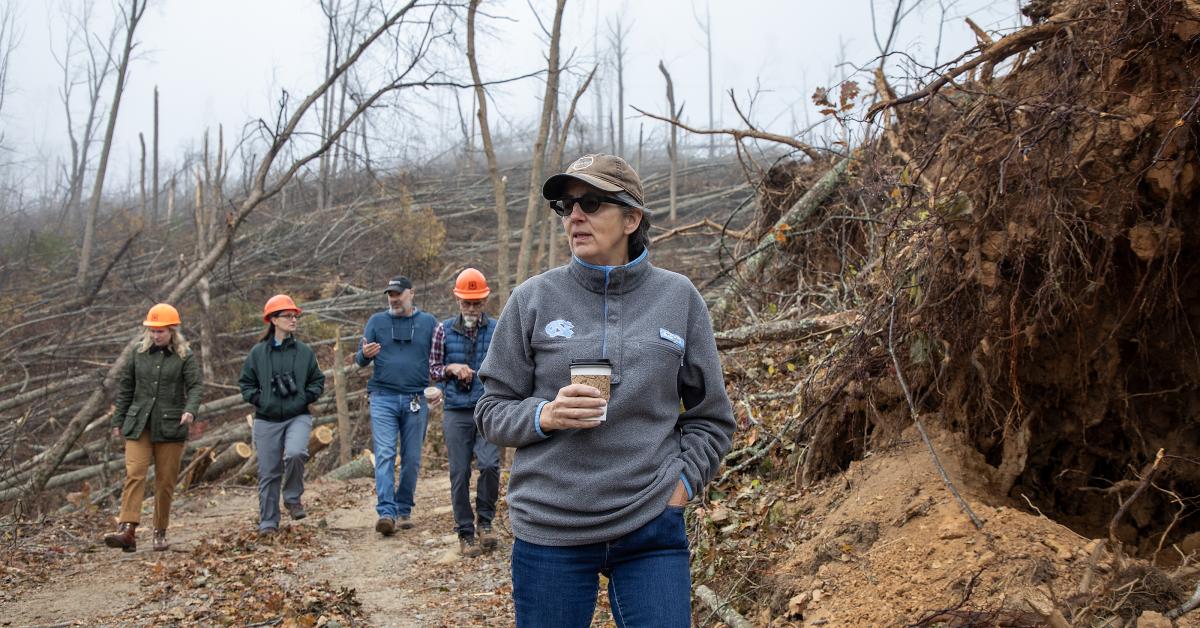We support our Publishers and Content Creators. You can view this story on their website by CLICKING HERE.

Federal, state and volunteer help are battling on as the North Carolina mountains trudge through the season’s first snowfall into ninth week of recovery from Hurricane Helene.
Snow fell overnight Thursday into Friday in Buncombe County, home to 43 of the 103 killed in North Carolina by the remnants of the storm. FEMA and the Small Business Administration continued their work, each amid howls of complaints and murmurs of gratitude.
Hazardous weather warnings were issued by the National Weather Service on Friday for Buncombe and Henderson counties, and the mountains of Caldwell, Burke, McDowell, Rutherford and Polk counties. Some schools closed. Near Wolf Laurel in Yancey County, about 7 inches of snow fell. It was 9 inches in Beech Mountain, about 5 inches in Bakersville, 4 inches in Banner Elk, and 3 inches in Boone and east of Weaverville.
Weekend highs around Asheville in Buncombe County, which got flurries, rebounded to the 60s on Sunday. From a high of 67 in the most populous city and county of the mountains on Monday, Thanksgiving week is forecast to include rain a couple of times and lows of 17 and 16 Saturday and Sunday nights, respectively.
Social media has buzzed in complaint of the Federal Emergency Management Agency and whether people are in tents. Published reports have shown tents are being used, in some cases as temporary, and not necessarily linked to federal help. FEMA regulations for length of time in housing assistance, such as hotels, is mixed into the need equation.
“If someone wants to come out of their tent, we will find a way working with them whether it’s a FEMA solution, or the state of North Carolina has a solution, or one of our volunteer organizations has a solution, we would find that,” Jeremy Slinker, FEMA deputy federal coordinating officer, said in a published report to an Asheville TV station on Friday.
Displacement assistance from FEMA is past $48 million to more than 13,000. Total FEMA aid is north of $247 million for 135,000 households in North Carolina, according to published reports citing the agency.
“We all say FEMA, but it’s a multitude of government organizations,” Doug Heye, former press secretary at the Small Business Administration among other stops in his career, said in a television interview describing how recovery evolves. The Small Business Administration, he said, “you don’t think of for disaster relief but it’s huge. It’s a big part of what SBA does.”
Eastern and southeastern residents of the state know well. Hurricane Floyd 25 years ago was deemed a 100-year flood, and one of the state’s worst natural disasters. More recently, recovery – including fiscal federally – is still continuing for Hurricanes Matthew (2016) and Florence (2018) with plenty of criticism for federal and state handling of assistance even today.
Democratic Gov. Roy Cooper last week met with President Joe Biden alongside Sens. Thom Tillis and Ted Budd, and U.S. Rep. Chuck Edwards, all Republicans in Congress. Cooper presented a federal aid proposal of $25.57 billion.
Truist Bank, headquartered in Charlotte, on Wednesday committed $725 million to recovery. It includes $650 million in lending; $50 million in loans or investments to Community Development Financial Institutions; $25 million in philanthropic grants to local and national nonprofits; and a challenge to its workforce to collectively achieve 10,000 volunteer hours.

 Conservative
Conservative  Search
Search Trending
Trending Current News
Current News 





